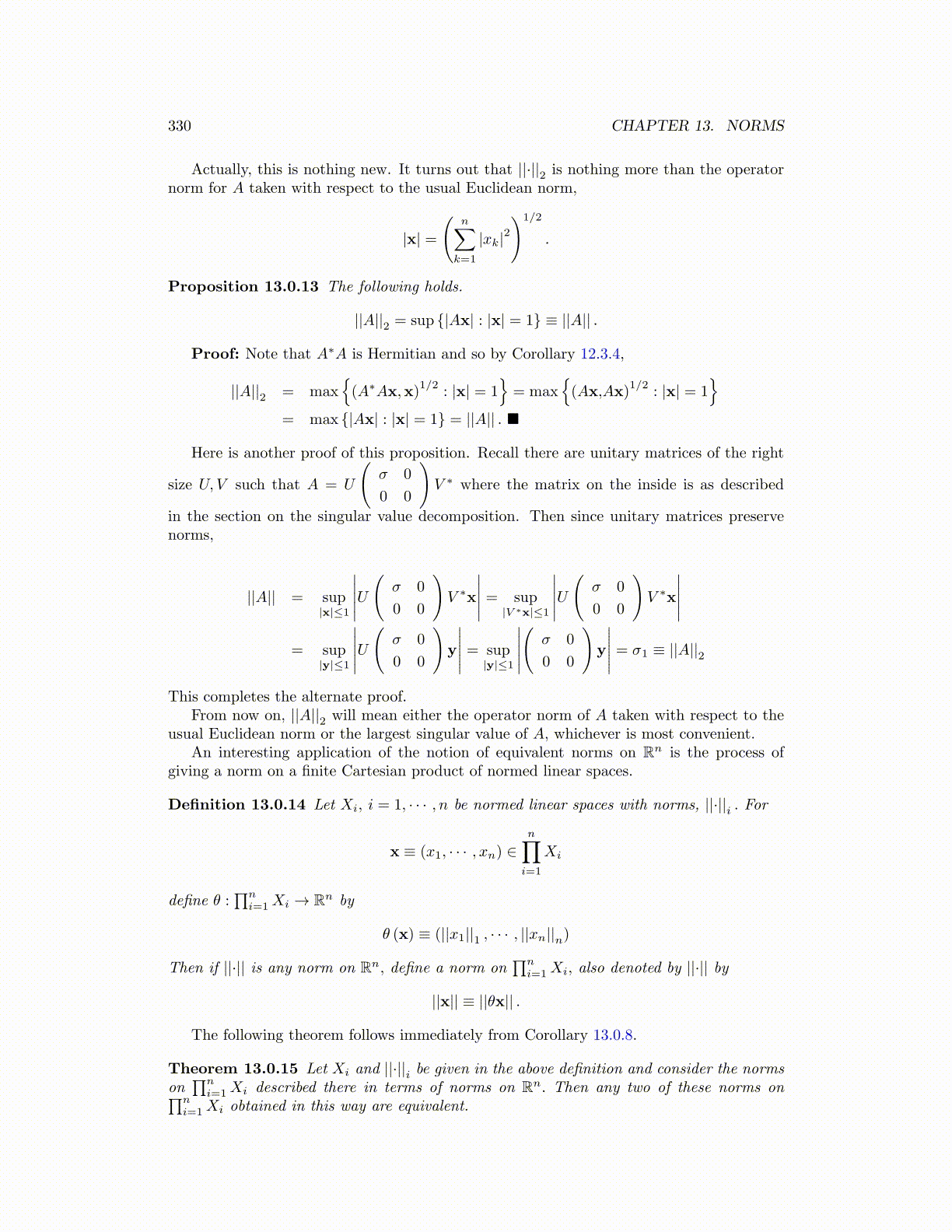
330 CHAPTER 13. NORMS
Actually, this is nothing new. It turns out that ||·||2 is nothing more than the operatornorm for A taken with respect to the usual Euclidean norm,
|x| =
(n∑
k=1
|xk|2)1/2
.
Proposition 13.0.13 The following holds.
||A||2 = sup {|Ax| : |x| = 1} ≡ ||A|| .
Proof: Note that A∗A is Hermitian and so by Corollary 12.3.4,
||A||2 = max{(A∗Ax,x)
1/2: |x| = 1
}= max
{(Ax,Ax)
1/2: |x| = 1
}= max {|Ax| : |x| = 1} = ||A|| . ■
Here is another proof of this proposition. Recall there are unitary matrices of the right
size U, V such that A = U
(σ 0
0 0
)V ∗ where the matrix on the inside is as described
in the section on the singular value decomposition. Then since unitary matrices preservenorms,
||A|| = sup|x|≤1
∣∣∣∣∣U(σ 0
0 0
)V ∗x
∣∣∣∣∣ = sup|V ∗x|≤1
∣∣∣∣∣U(σ 0
0 0
)V ∗x
∣∣∣∣∣= sup
|y|≤1
∣∣∣∣∣U(σ 0
0 0
)y
∣∣∣∣∣ = sup|y|≤1
∣∣∣∣∣(σ 0
0 0
)y
∣∣∣∣∣ = σ1 ≡ ||A||2
This completes the alternate proof.From now on, ||A||2 will mean either the operator norm of A taken with respect to the
usual Euclidean norm or the largest singular value of A, whichever is most convenient.An interesting application of the notion of equivalent norms on Rn is the process of
giving a norm on a finite Cartesian product of normed linear spaces.
Definition 13.0.14 Let Xi, i = 1, · · · , n be normed linear spaces with norms, ||·||i . For
x ≡ (x1, · · · , xn) ∈n∏
i=1
Xi
define θ :∏n
i=1Xi → Rn by
θ (x) ≡ (||x1||1 , · · · , ||xn||n)
Then if ||·|| is any norm on Rn, define a norm on∏n
i=1Xi, also denoted by ||·|| by
||x|| ≡ ||θx|| .
The following theorem follows immediately from Corollary 13.0.8.
Theorem 13.0.15 Let Xi and ||·||i be given in the above definition and consider the normson∏n
i=1Xi described there in terms of norms on Rn. Then any two of these norms on∏ni=1Xi obtained in this way are equivalent.